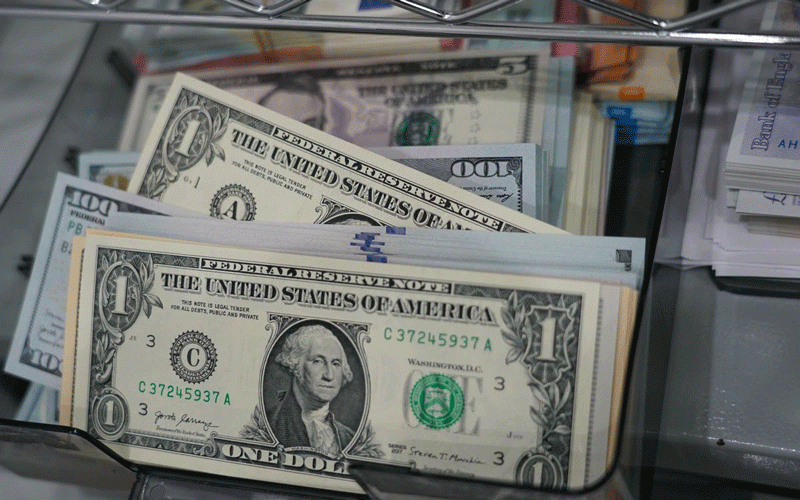
BY the end of the Zimbabwe Economic Development Conference (ZEDCON 2023), which was held in Victoria Falls last month, you could pretty much connect the dots and figure out that the country was not yet ready to let go of the greenback.
The requirements for a successful de-dollarisation programme seem not to be yet in place.
Albeit a strong emotional attachment and an eagerness to see our local currency succeed, especially from the authorities, the technocrats and business community warned that the dedollarisation programme should be gradual rather than abrupt to avoid disaster.
Safe to say the advice was considered and the multicurrency regime will extend for an additional 5 years to December 2030.
Zimbabwe has always maintained a love-hate relationship with the greenback, with the United States dollar (USD) synonymous with the end of the hyperinflation era in the 2008 period.
However, the extreme hate case was when the authorities tried to completely ban its use in June 2019. Well that did not turn out well as this was reversed during the Covid-19 pandemic, and the use of free funds was allowed taking the country back to the multi-currency regime.
By mid-2022 the currency that was once banned was now being used to conclude over half of the transactions in the country and even the government had started to demand some payments of taxes and duties solely in foreign currency.
Even listed companies had started rewarding their shareholders in the US dollar. The final nail in the coffin was Statutory Instrument (SI) 118A of 2022, which allowed the multicurrency to run up to the end of the National Development Strategy (NDS1), which is December 2025.
- Love–hate relationship with the US$ continues
- Effectively resolving inflation problem
- Risks associated with the Zim financial sector at the moment
- InnBucks, beyond what meets the eye
Keep Reading
Since then the USD economy has even increased to more than 80% and the majority of deposits in the banking system are now in US$.
The informalisation of the economy, which is estimated to be above 70% also speeded the dollarisation process, together with the vulnerability of the local currency to hyperinflation.
With minimal effort, the market has self-corrected and decided to use the greenback. Those, who support this move are often quoted talking about stability and the ability to plan as the major advantages of a hard currency.
On the other hand, there is a school of thought that believes that for significant economic development to take place, Zimbabwe needs to use its own currency.
If you care to listen to the arguments, you are likely going to be told that the use of the hard currency makes our manufacturing products less competitive and attractive in the international market and it promotes imports making us a dumping site.
The more sophisticated arguers of this motion are the ones, who talk about how the Reserve Bank of Zimbabwe (RBZ), which is a critical institution, will be crippled by dollarisation.
One thing that is clear though is a commitment to keep the local currency alive, despite the greenback available to support. To this extent, other innovative instruments like gold coins and digital gold coin tokens have been introduced by the authorities to store value and protect against loss of purchasing power in the local currency.
Other taxes originally payable in the hard currency are now demanded in the local currency to make it attractive.
Analyst’s comment
I think the extension of the multicurrency regime was needed to bring stability to the market. Had it not been extended; some financial institutions and investor were already unsure about what would happen post the deadline and subsequently limited the tenure of their investments.
This was putting pressure on the cost of securing those funds, which would in turn be factored into general prices in the economy. Although six years is relatively a longer term, I am not convinced that by 2030 the environment conducive to de-dollarisation will have been put in place.
If anything, the local currency economy seems to be shrinking with now other retailers and wholesalers that used to price in local currency now quoting in hard currency with an option to pay in the Zimbabwe dollar.
However, for the de-dollarisation exercise post-2030 to stand a chance, I opine the following will need to be done in the interim. There should be no foreign currency retention whatsoever for any exports.
The local currency should never be imposed on any economic agent, meaning anyone exporting should be given all their receipts in foreign currency, It might not be abrupt but it has to be the goal over a given time. In addition to that, payment of taxes including import duties for motor vehicles should have a local currency option. Essentially the government should be an underwriter of its currency.
As articulated by Dr Caleb Fundanga, the former Governor of the Bank of Zambia, in one of the Zimbabwe Economics Society webinars, the foreign currency markets should be liberated with no caveat whatsoever.
Anyone in the street should be able to walk into the bank and buy or sell whichever currency they have. Once that confidence is built, you are likely to see a reduced artificial demand for foreign currency.
Finally, I opine that our currency will need to be backed.
Notwithstanding the advantages of a fiat currency, I think at the moment there is a dire need to do the donkey work in convincing the market that the local currency is not just paper but has reserves backing it.
These reserves could be in the form of the minerals that we are endowed with or other currencies but it is very important to instil confidence.
If we are so fixated on having our currency, perhaps these are some of the things that we have to implement.
- Hozheri is an investment analyst with an interest in sharing opinions on capital markets performance, the economy and international trade, among other areas. He holds a B. Com in Finance and is progressing well with the CFA programme. — 0784 707 653 and Rufaro Hozheri is his username for all social media platforms.










